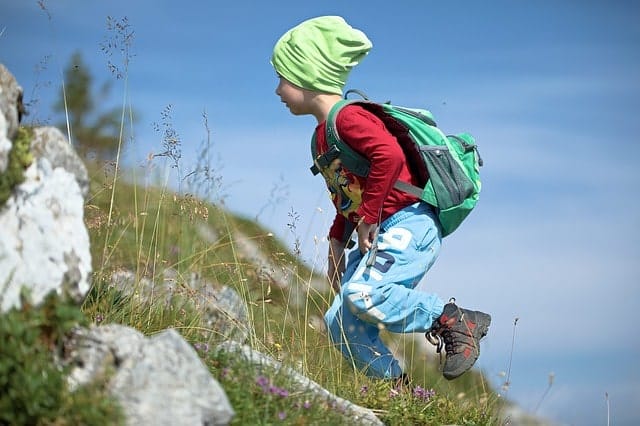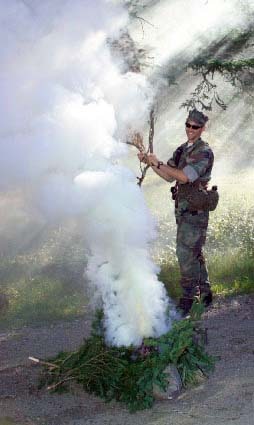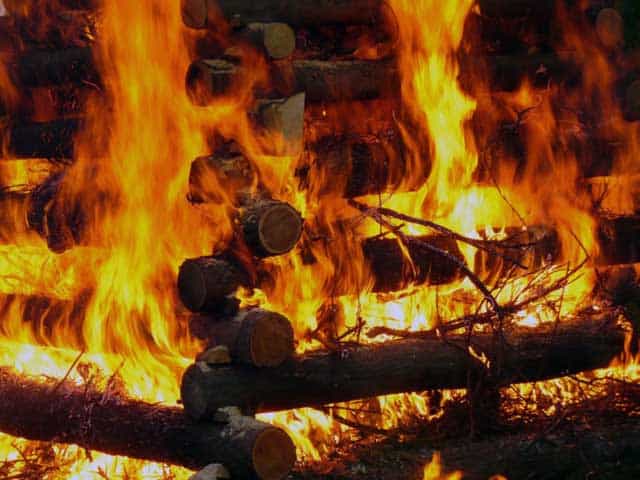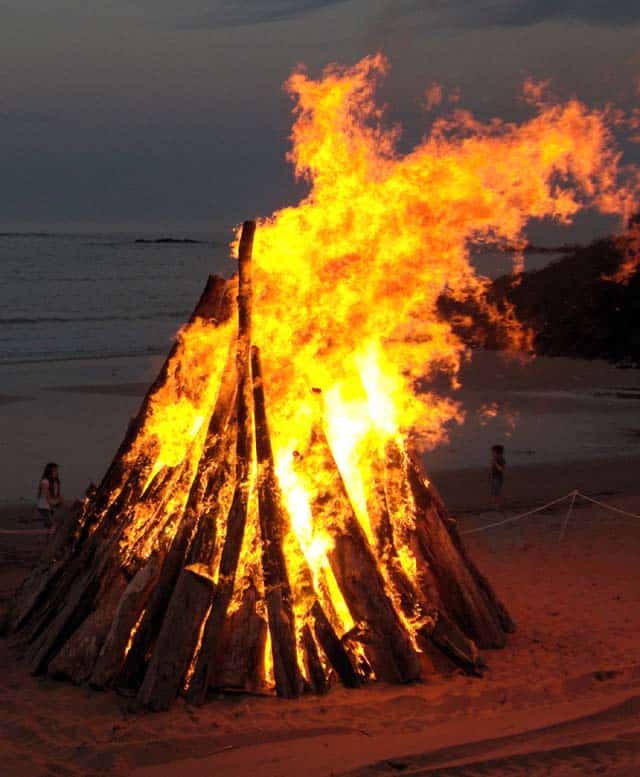You’ve seen distress signals in movies like Castaway or Life of Pi. The characters will quickly light a fire or frantically wave their hands as a plane passes overhead. Depending on the level of drama, maybe the character gets rescued or not.
What Hollywood doesn’t depict is just how difficult it can be to make a distress signal. This is problematic because many people take it for granted that they’d be able to make a distress signal if lost or injured in the wilderness.
Why You Need to Know Distress Signals
No one wants to believe they will get lost or injured in the woods and require rescuing (especially that guy hiking in sandals). That happens to “other” people or people with “less skills.”
But the reality is that there are approximately 5,000 search and rescue missions each year. As more people visit National Parks, the number is increasing.
In 2014 (one of the latest years for which info is available), over 3,400 people were required to be rescued in US National Parks. This number doesn’t even include people who went missing outside of National Parks! One hundred sixty-one of the people in these cases died. (Sources: 1, 2)
The people who need rescuing aren’t idiots (well, not always). Most often, they are day hikers who had bad luck or didn’t realize how quickly weather conditions can change in the wilderness.
If you are lost or injured in the wilderness, making a distress signal will help you be found faster. In addition, signaling will give you something to do. You are less likely to panic when you feel like you are doing something to help the situation instead of passively waiting to be found.
Don’t think you are invincible. No matter how skilled you are or how many precautions you take, you might still require rescuing – so be prepared!
5 Ways to Make a Distress Signal
There are many ways to signal for help. You’ll have to assess your surroundings to determine which makes the most sense.
For example, a smoke signal might not make sense when you are in an area at high risk of forest fire.
Whistle
It is wise to always bring a whistle with you into the wilderness. Many hiking backpacks now even have whistles built into the sternum straps.
My daughter doesn’t always carry her pack while hiking (though she should; at least she’d have basic survival supplies if we got separated). That’s why I make sure she wears a whistle around her neck. Read our guide to the best emergency whistles.
To signal for help with a whistle, blow it in short bursts three times. Then, wait a minute and listen for a response. If you don’t hear anything, blow again. Continue doing this so rescuers can zero in on your position.

Smoke Signal
You can make a smoke signal if you need rescuing during the day. This differs from a regular campfire since campfires (when properly made) won’t produce much smoke. Ideally, you make three smoke signals positioned in a triangle shape. Each smoke signal fire should be about 100 paces from the other.
To make the smoke signal, first, gather lots of materials. You will need tinder, kindling, and fuelwood.
You will also need lots of green wood (wood that is still alive), branches with lots of green vegetation, and grass. These create dense, white smoke.
You can also use rubber tires for a smoke signal. They will create black smoke, but this will be noxious to breathe in.
Build up a fire as you normally would. Let the fire burn down so you have many embers. Then, start piling your green vegetation on top of the embers. You will get a lot of smoke.
Smoke signals work best on clear days. On overcast days, it can be difficult to see the smoke. You should switch to a fire signal instead of a smoke signal at night.

Fire Signal
When making a fire signal, you should be prepared to make three of them. If you only make one fire signal, it could be mistaken as a campfire.
As with smoke distress signals, the fires need to be in a triangle shape. Do not make fire signals in a row. If positioned in a row, they will appear like one large fire to a plane passing overhead. Your signal fires should be at a place with good visibility, such as on the top of hills or in a large clearing.
You need to be prepared to keep the fire going all night. Gather a lot of wood for the fire before night falls. Use the star fire lay if wood is limited, as it doesn’t require as much wood.
If wood is limited, you might consider making three large pyres instead. Then, you’d wait until the ideal moment (such as when a helicopter flies overhead) to light the pyres.
Signal fire pyres are built differently than campfires (though three in a triangle would also work). Ideally, you build “log cabin” walls from large kindling or fuel wood. Then you ready a huge teepee of tinder and kindling within the walls.

Alternatively, you can build a very tall teepee configuration. Normally, I would not put fuel wood on the initial teepee construction when building a campfire – I’d add the fuel wood gradually. However, because signal fires need to burn for so long and be so visible, you will include lots of fuel wood on your pyre.

Because signal fires are so large, you must take extra precautions when building them. Make sure absolutely no flammable brush is around the fire. Otherwise, you’ll have to add forest fire to your list of survival concerns.
Signal Mirrors
Signal mirrors require much more skill than other types of signals. They are also more challenging for rescuers to see. Generally, signal mirrors are only used in situations where the rescuers already know the person’s approximate location. That person doesn’t want anyone else to know their location – such as when rescuing soldiers on enemy territory.
However, if you have nothing else or a fire doesn’t make sense, you can use a mirror to signal for help. Other shiny objects like belt buckles can also work.
Mirrors intended for signaling will have small holes in the middle. This helps you aim the reflected light at the target better. Instructions will be included with the mirror.
See this post for more on how to use a signal mirror.
Other Visual Signals
If you can’t use other methods, you might try using one of these visual distress signals. They aren’t as effective as the others, but are better than nothing:
- Headlamp or Flashlight Signal: Use the strobe feature on your flashlight or headlamp to signal for help. Or, you can move your hand in front of your flashlight to create an SOS message. SOS is signaled as 3 short, 3 long, and 3 short bursts.
- Build a Large X or V Shape: You can make a giant X or V shape from rocks or wood. These shapes are used to show that you need assistance.
- On the Move: Generally, you should stay put if you are lost and need rescuing. However, if you must move for some reason, you can make a large arrow out of logs to point in which direction you have gone. The arrow must be at least 10 feet long to be visible in the air. You will also have to continue in the direction you indicated, so be sure you won’t change your course before you make the arrow.
In the meantime, you’ll use the other survival skills in this guide to stay alive. While it is unlikely that you will ever need these skills, there’s no better time to start practicing than today.


